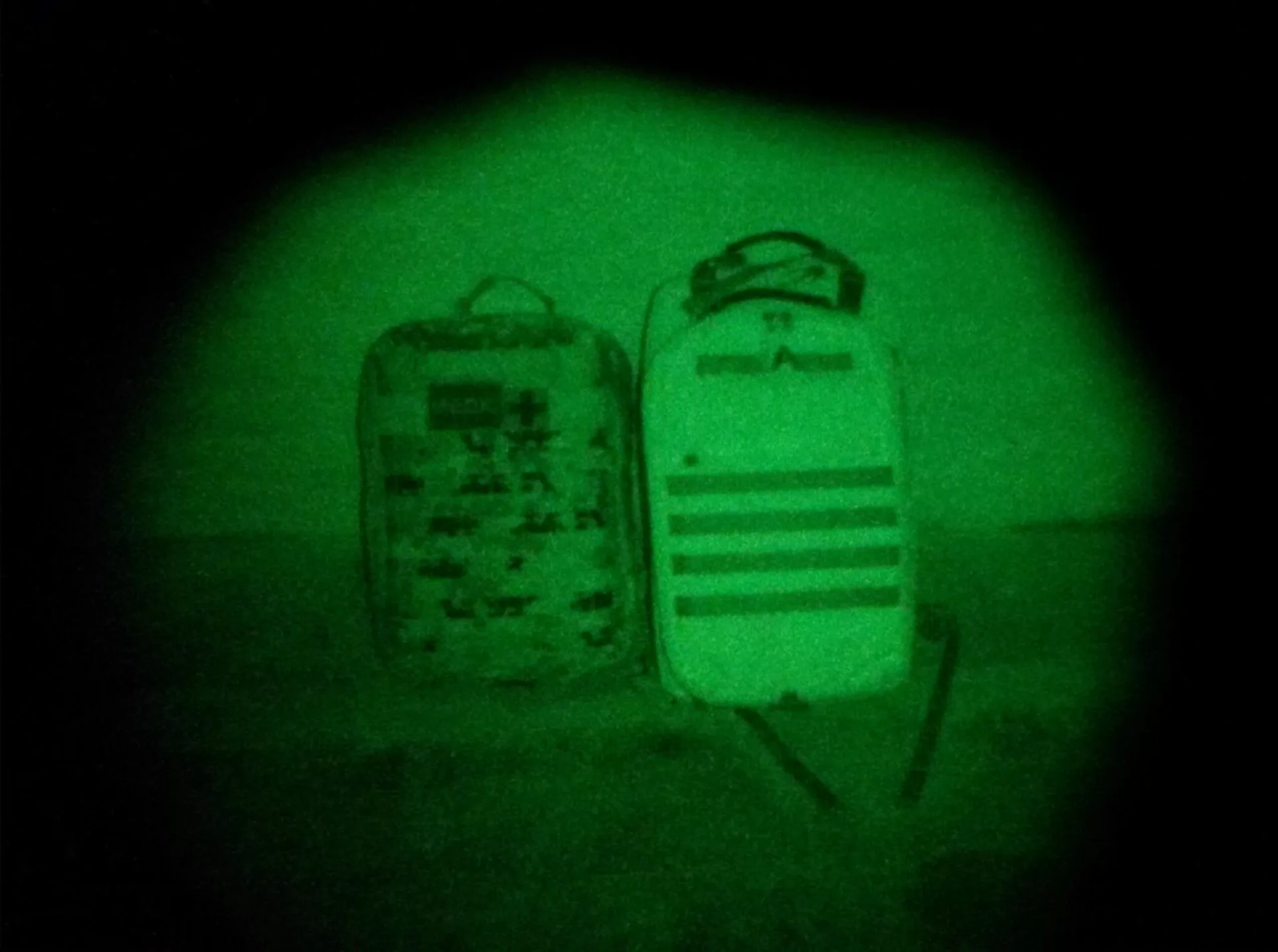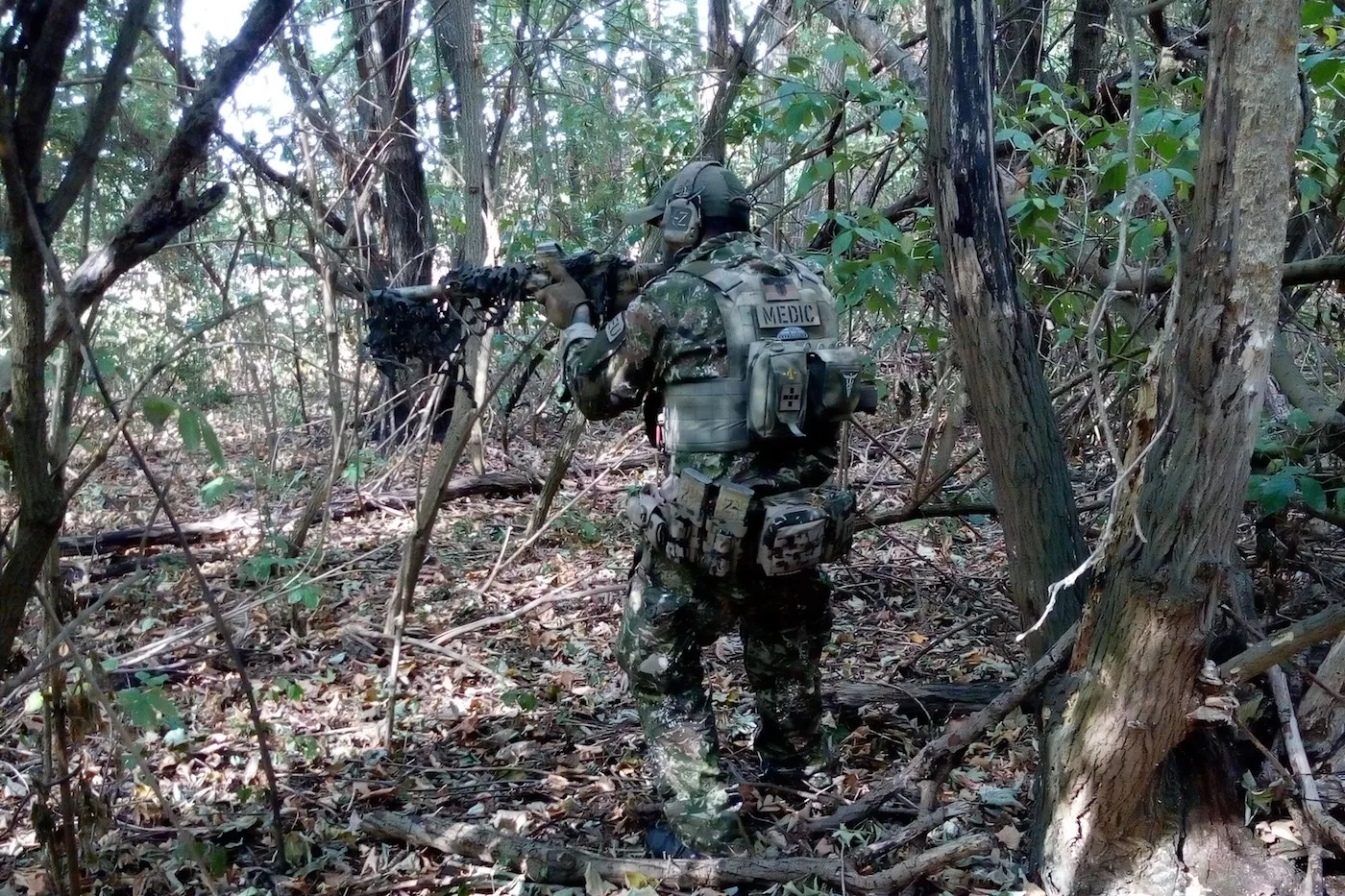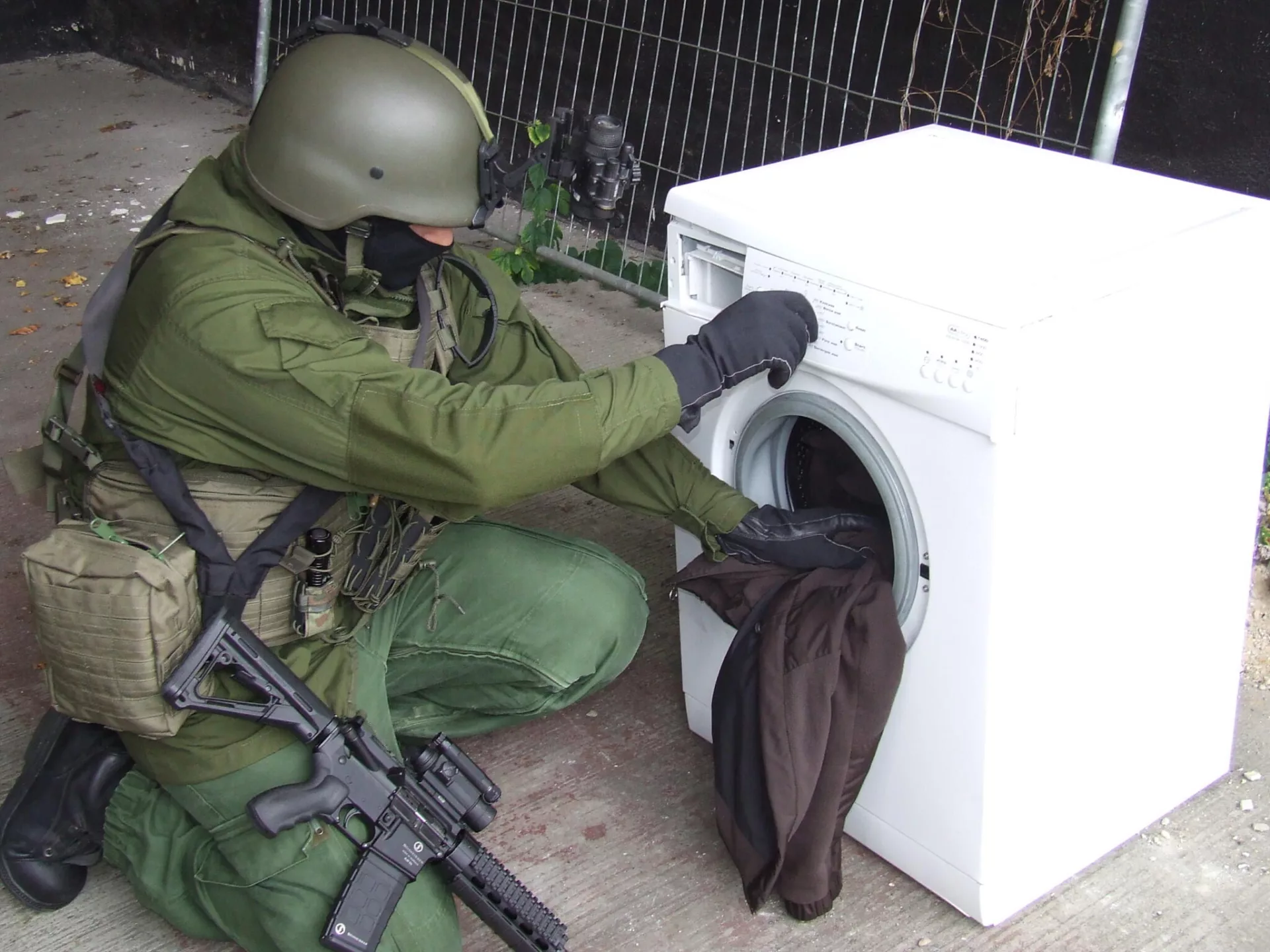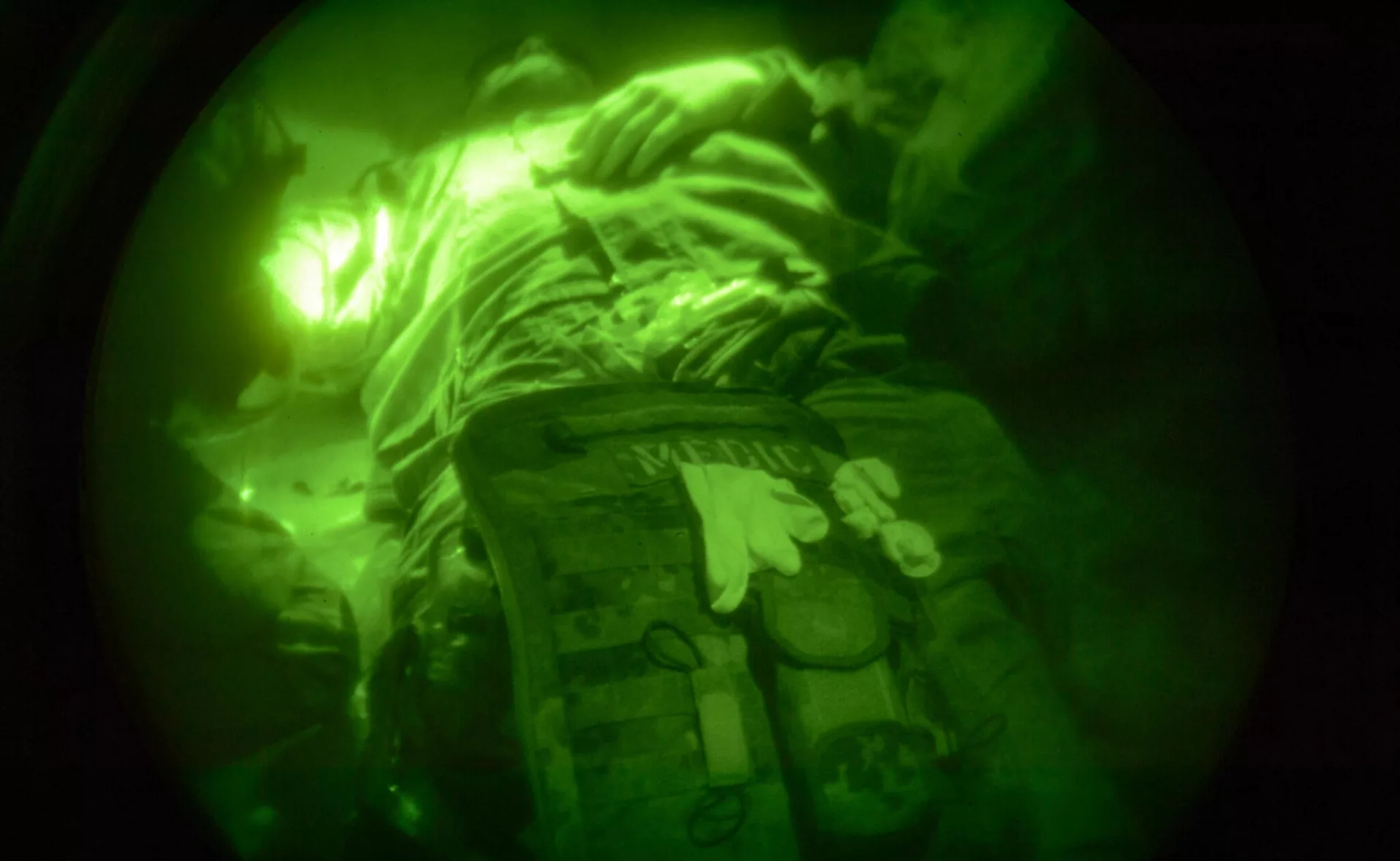Infrared camouflage of textiles
All modern tactical equipment and military clothing for soldiers today is equipped with IR camouflage. Operations at night are just as much a standard in the military as the technology of night vision devices. We want to shed some light on how camouflage is achieved at night.
Particularly in the NIR (near-field infrared) range, it is essential to adjust the brightness level and structure to the average brightness and structure of the operational background in order to avoid detection by night vision devices.
This means that in addition to the openly visible camouflage, i.e. the camouflage print, there is also a level that is only visible in the NIR spectrum.
Fabrics, webbing, zippers and plastic buckles that are not treated reflect so much infrared radiation that they appear very bright, almost white, in night vision devices.
A sophisticated camouflage system is required to prevent this and prevent the soldier and his equipment from appearing as a white ghost in his surroundings.

How does the textile get its IR camouflage at close range?
Procedures for military clothing and equipment
There are basically only a few processes that can produce this effect. These are achieved by adding carbon black pigments or by coating with these pigments.
Printing
When printing military textiles, the individual printing inks are adjusted by adding carbon black particles in such a way that the reflective values specified by the military are adhered to. The result is a camouflage print that performs reliably in both [IRR and visible] spectra.
This process has proven itself and has a good camouflage effect combined with good rub resistance and wash permanence.
Coating
In coating, which is usually used for plain fabrics and webbings, pigments are normally applied and fixed to the textile fibers with a binder system, which can have a negative effect in the form of poor rub fastness values of the colors and a lack of washing permanence.
Weaving
In this process, individual pre-treated fibers are woven into a fiber strand to form a woven fabric or webbing, which is processed in the infrared textiles. It is possible to create a pattern that is only visible in the near infrared range (NIR) with a different content of coated individual fibers, while appearing monochrome in the visible spectrum.
The problem here is that only the pattern as such but not individual colors or areas can be equipped with different back steel values. This process is also one of the most expensive and tends to be used in the webbing sector. However, the rub fastness values and wash permanence are above average with this process.
Addition to military buckles and zippers
Here, the carbon black pigments are added to the base material. This process is mainly used for plastic products. In particular, all buckles, zippers, but also weapons and attachments should be mentioned here. This process is permanent and does not deteriorate with use.
Use and deployment
Camouflage in the NIR range should not be underestimated, as it enables the soldier not to be the proverbial highlight in the forest. Modern armies pay meticulous attention to the reflectivity of the uniforms and equipment used. Camouflage in the NIR range can decide the weal and woe of the mission and the life of the individual soldier. Night vision devices are becoming increasingly widespread and are constantly being improved.
If individual items of equipment do not have this camouflage, the entire rifle squad and therefore the mission are at risk. Inadequate camouflage makes reconnaissance at night much easier for the enemy. Therefore, superiors should also pay attention to this and, if in doubt, take a look at the rifle squad with night vision equipment before setting off to ensure that the camouflage also meets the requirements at night.
Terrain shapes and their characteristics
Different types of terrain require coordinated camouflage. What works well in the forest is rather counterproductive in snowy surroundings, and is also not the method of choice in built-up areas.
The reflective values must be adapted to the terrain in which you are moving. Mixing different camouflage prints on the individual uniforms and items of equipment can be helpful in order to blur the silhouette of the soldier and provide him and the rifle squad with safety through camouflage.
It is therefore advisable to constantly evaluate yourself and your equipment within the rifle squad, especially when transferring to other terrain forms, and to rectify any shortcomings in the camouflage as soon as possible.

How is IRR optimized fabric cared for and maintained?
All IRR textiles are susceptible to wear and tear due to abrasion, cleaning, but also adhesions or soiling, which can cause them to lose some or all of their camouflage properties. Particular attention should be paid to cleaning the uniform and equipment.
Washing the uniform with normal detergents containing bleach or brighteners is particularly damaging, as this can destroy the IRR coating settings.
The use of fabric softeners is also not advisable, as this can cause particles to enter the fabric and impair the camouflage effect.
Equipment such as rucksacks, protective vests and attached pockets should be cleaned as gently as possible. Warm water and hand washing is the method of choice here.
Neutral soap or another detergent without added brighteners and bleach can also be used for stubborn stains.
The materials used by Zentauron, such as Cordura fabric, which is used in almost all bags, plate carriers, protective vests and backpacks, meet these requirements and provide camouflage not only in daylight, but also under night vision conditions. Because: camouflage means protection.


